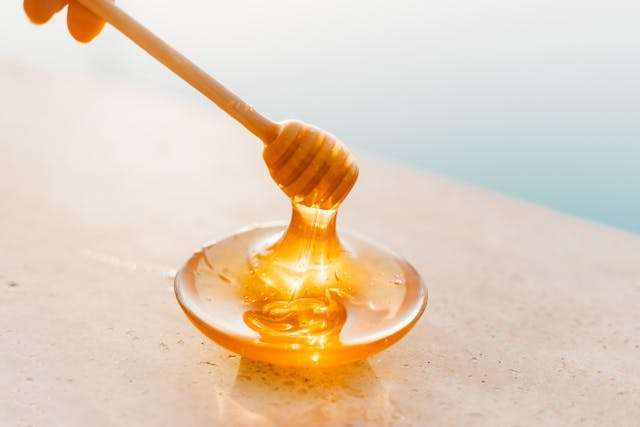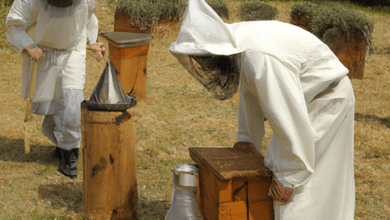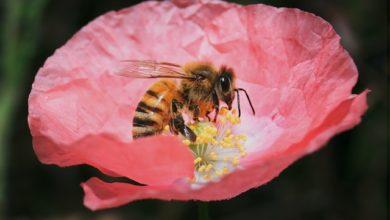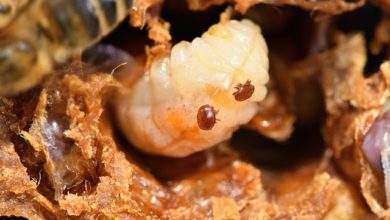18.6% – What Does it Mean to Beekeepers?

Beekeeping is a practice that requires a deep understanding of the intricate workings of a bee colony. Among the many metrics that beekeepers monitor, one key figure that holds significant importance is 18.6%. This metric, representing the moisture content of honey, plays a crucial role in maintaining the health and productivity of bee colonies. Understanding the significance of 18.6% and how it relates to beekeeping is essential for beekeepers seeking to ensure the well-being of their hives.
Importance of 18.6% to Beekeepers
- Maintaining the ideal moisture content of 18.6% in beehives is essential for the health and well-being of the bees. Too much moisture can lead to mold growth, which can harm the bees and their larvae.
- Bees use honey as a source of food during the winter months when they are unable to forage for nectar. If the moisture content of the honey is too high, it can ferment and become unusable for the bees.
- In addition to affecting the quality of honey, moisture levels in the hive can also impact the overall hive environment. High moisture levels can create a damp and cold environment, making it difficult for bees to regulate the temperature inside the hive.
Overview of the Impact of 18.6% on Bees
Too much moisture in the hive can lead to an increased risk of diseases and parasites, such as Nosema and Varroa mites. These pests thrive in damp conditions and can decimate bee populations if left unchecked. On the other hand, low moisture levels can also be detrimental to bees. Dry conditions can cause honey to crystallize, making it difficult for bees to access as a food source.
Maintaining the ideal moisture content of 18.6% is a delicate balance that beekeepers must constantly monitor and adjust. By carefully managing moisture levels in their hives, beekeepers can help ensure the health and productivity of their bee colonies.
Explanation of 18.6% as a Metric in Beekeeping
18.6% refers to the ideal moisture content in honey for optimal storage and preservation. This percentage is critical in ensuring that honey maintains its quality and does not ferment or spoil.
Factors Influencing 18.6% in Beekeeping
- Environmental conditions such as humidity levels can impact the moisture content of honey.
- Beekeepers must carefully monitor and control factors like temperature and ventilation to maintain the ideal 18.6% moisture level.
Relationship Between 18.6% and Bee Health
- Honey with the correct moisture content is essential for the health of bees, as high moisture levels can lead to disease and mold growth.
- Maintaining 18.6% moisture in honey can help prevent health issues within the bee colony.

Impact of 18.6% on Honey Production
- Honey that meets the 18.6% moisture standard will have a longer shelf life and better flavor.
- Beekeepers who ensure their honey is at the optimal moisture level can expect higher quality and yield in their honey production.
Importance of 18.6% to Overall Bee Colony Wellness
- The moisture content of honey is directly linked to the overall wellness of the bee colony.
- By prioritizing 18.6% moisture levels, beekeepers can promote a healthier and more productive colony.
Understanding and maintaining 18.6% in beekeeping is crucial for the well-being and success of bee colonies. By paying close attention to this metric, beekeepers can ensure the health, productivity, and overall quality of their honey production.
Monitoring 18.6% in Beehives
By keeping a close eye on the levels of 18.6% in beehives, beekeepers can make informed management decisions that can ultimately lead to more sustainable beekeeping practices.
Tools and Techniques for Measuring 18.6% in Beehives
- Hydrometers: Beekeepers often use hydrometers to measure the levels of 18.6% in beehives.
- Refractometers: Another tool commonly used to measure 18.6% in beehives is refractometers, which provide more precise readings.
- Sampling Methods: Beekeepers may also use sampling methods such as taking samples of honey or syrup to measure 18.6% levels.
Frequency of Monitoring 18.6%
- Beekeepers should monitor 18.6% levels in their beehives regularly, ideally on a monthly basis.
- Monitoring should be done more frequently during critical periods such as winter or times of nectar dearth.
How Beekeepers Use 18.6% Data to Make Management Decisions
- Beekeepers use 18.6% data to determine if supplementary feeding is necessary for the bees.
- Monitoring 18.6% levels can also help beekeepers assess the overall health and condition of their hives.
Challenges in Monitoring 18.6% in Large-Scale Beekeeping Operations
- Large-scale beekeeping operations face challenges such as the time and labor required for monitoring 18.6% levels in numerous hives.
- Ensuring consistency in monitoring practices across a large number of hives can also be challenging.
Importance of Accurate 18.6% Monitoring for Sustainable Beekeeping Practices
- Accurate monitoring of 18.6% levels is essential for preventing starvation and ensuring the overall health and productivity of bee colonies.
- By making informed management decisions based on 18.6% data, beekeepers can contribute to more sustainable beekeeping practices and the long-term viability of bee populations.
Monitoring 18.6% in beehives is a critical task that beekeepers must undertake to ensure the well-being of their colonies. By utilizing the right tools and techniques, monitoring 18.6% levels regularly, and making informed decisions based on the data collected, beekeepers can play a vital role in promoting sustainable beekeeping practices.
Maintaining Optimal 18.6% Levels
One essential aspect of beekeeping is ensuring that the bees maintain optimal 18.6% levels in their hives. Here are various strategies and factors that beekeepers need to consider to support healthy 18.6% levels in their bee colonies.
Strategies for improving 18.6% in beehives:
- Regular hive inspections to monitor 18.6% levels and identify potential issues
- Providing a diverse range of floral sources for bees to forage on
- Proper hive ventilation to regulate temperature and humidity levels
- Managing pests and diseases that can impact 18.6% levels
Impact of environmental factors on 18.6%:
- Weather conditions such as temperature and humidity can affect bees’ ability to maintain optimal 18.6%
- Pollution and pesticide exposure can harm bees and disrupt their 18.6% levels
- Habitat loss and lack of floral resources can lead to nutritional deficiencies in bees
Nutritional considerations for maintaining healthy 18.6% levels:
- Ensuring bees have access to a variety of pollen and nectar sources
- Supplementing bees’ diet with sugar syrup or protein patties when natural food sources are limited
- Monitoring hive nutrition and making adjustments as needed to support 18.6% health
Role of beekeeper interventions in optimizing 18.6%:
- Providing supplemental feeding when necessary to ensure bees have enough food to maintain optimal 18.6%
- Requeening if the queen bee’s 18.6% levels are not up to par
- Regular hive maintenance and cleaning to prevent diseases and pests from impacting 18.6% levels
Ensuring proper 18.6% levels to support bee colony strength and productivity is essential for beekeepers who want to maintain healthy and thriving bee colonies. By implementing the strategies and considerations outlined in this chapter, beekeepers can help their bees maintain optimal 18.6% levels and contribute to the overall well-being of their hives.
Conclusion
The significance of 18.6% in beekeeping cannot be overlooked. It is a metric that directly influences the quality of honey, the health of bee colonies, and the success of beekeeping operations. By understanding the role of 18.6% and employing diligent monitoring and management practices, beekeepers can contribute to the sustainable and thriving future of beekeeping.
FAQ:
How does moisture content affect beekeeping?
- Moisture content plays a crucial role in beekeeping as it affects the temperature and humidity levels inside the hive. An optimal moisture content of 18.6% helps regulate the hive’s internal environment, ensuring the bees’ comfort and well-being.
What is 18.6% in the context of beekeeping?
- In beekeeping, 18.6% refers to the ideal moisture content in honey, which directly influences the quality and shelf life of honey produced by bees.
How do beekeepers measure 18.6% in beehives?
- Beekeepers use specialized tools such as refractometers and hygrometers to measure the moisture content of honey in beehives, allowing them to obtain accurate readings of 18.6%.
What are the consequences of high moisture content in beekeeping?
- High moisture content in beekeeping can lead to mold growth, condensation, and increased risk of disease among the bee colony. It can also cause discomfort for the bees and impact their productivity and overall health.
Why is 18.6% important in beekeeping?
- Maintaining optimal 18.6% levels is crucial for supporting the overall health and productivity of bee colonies, as it directly impacts honey production and colony wellness.
Can beekeepers adjust moisture content in their hives?
- Beekeepers can adjust moisture content in their hives by implementing proper hive management practices, such as providing adequate ventilation, using moisture-absorbing materials, and monitoring humidity levels regularly. These measures can help maintain an optimal moisture level for the bees.

What are the signs of improper moisture content in a beehive?
- Signs of improper moisture content in a beehive include mold growth, condensation on hive surfaces, excessive humidity, and dampness inside the hive. Beekeepers should monitor these signs and take action to correct any issues with moisture levels.
What factors influence 18.6% in beehives?
- Environmental factors such as humidity, temperature, and nectar flow can all influence the moisture content of honey in beehives, requiring beekeepers to carefully monitor and manage these conditions.
How can beekeepers maintain optimal 18.6% levels in their hives?
- Beekeepers can maintain optimal 18.6% levels by providing proper ventilation, controlling humidity levels, and offering supplemental feed to bees during times of low nectar flow.
How does moisture content affect bee behavior?
- Moisture content can affect bee behavior by impacting the hive’s internal environment. Bees are sensitive to changes in humidity and temperature, so it is essential to maintain optimal moisture levels to ensure the bees’ comfort and productivity.




